NYC’s Forgotten ‘War on Christmas Trees’
Discover how an obscure holiday crackdown affects festive street vendors today!

Uncover little-known facts about America's longest suspension bridge, the Verrazzano-Narrows Bridge!

On November 21st, 2024 the Verrazzano-Narrows Bridge celebrates its 60th anniversary. The bridge, spanning all the way from Brooklyn to Staten Island, was constructed in five years and completed in 1964. With special help from bridge expert and explorer, Dave Frieder, we’ve compiled a list of the Verrazzano-Narrows Bridge’s top 10 secrets.
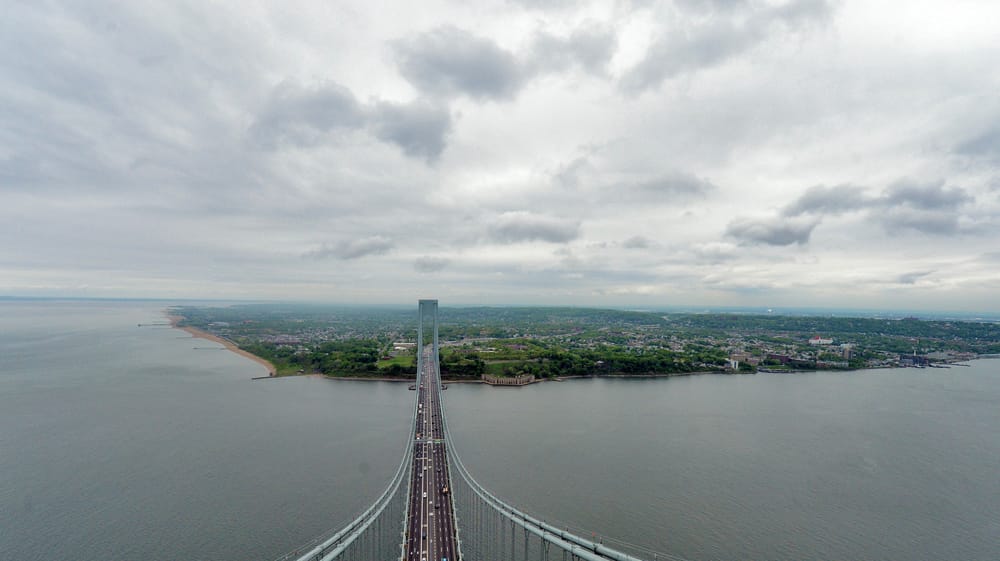
While the bridge is named after the Italian explorer, Giovanni da Verrazzano, Governor Nelson Rockefeller preferred to spell Verrazzano with a single “z.” Giovanni da Verrazzano is said to be the first European to sail into the New York Harbor in 1524, arriving in the harbor on a French ship, “La Dauphine.”
The Italian Historical Society of America pushed for the bridge to be named after the explorer. When the bridge opened, Italian Americans, along with the Italian Ambassador to the United States, advocated for the spelling to have the proper two “z’s.” However, Rockefeller stuck with the single “z,” claiming it was the “American spelling.” Dave Frieder mentioned that it is also rumored that the TBTA, the parent company of MTA Bridges and Tunnels, wanted to save money by cutting out a letter.
In 2018, a bill was passed to add the second "z" to the bridge's name, but it wasn't until 2020 that signs started to be replaced. In total, there were 19 signs that had to be corrected.
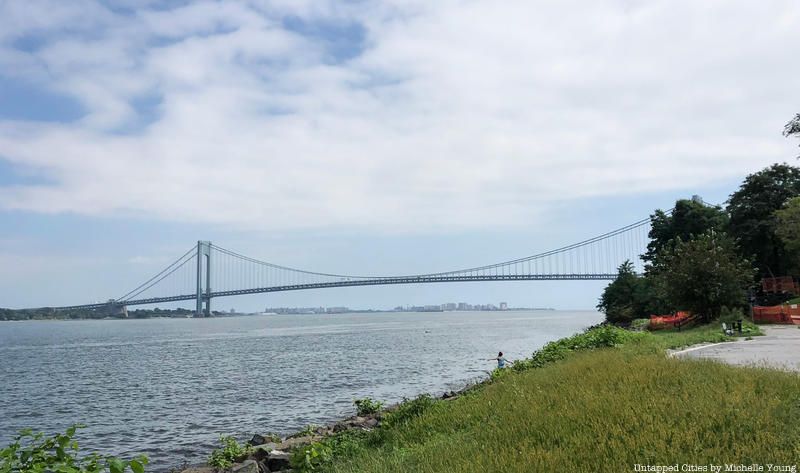
According to the Huffington Post, the day after Kennedy’s assassination, a movement began to rename the bridge after the beloved President. Thousands signed a petition to change the name, however, at the time, Robert Kennedy, who was Attorney General, assured the director of the Italian Historical Society of America, John LaCorte, that there would be no name change. Instead, New York City’s international airport was renamed John F. Kennedy, previously Idlewild Airport.
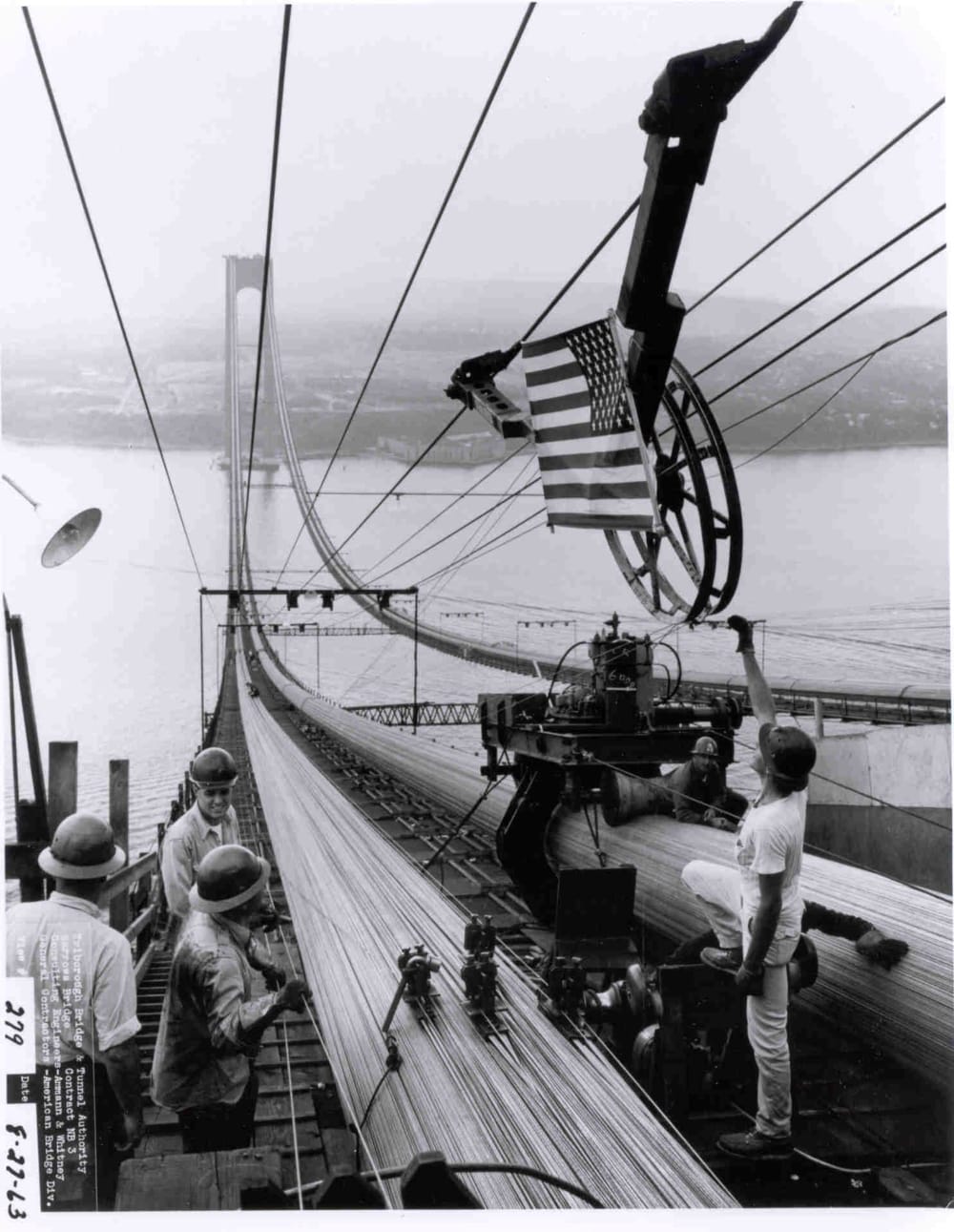
Out of the 12,000 men who worked on the Verrazzano Bridge’s construction, three died by falls. During the height of the bridge’s construction, 1,000 men could be working on the site at any given time. Bensonhurst Bean reports that after the three men died, workers demanded better safety precautions, including safety nets which they eventually got. Many workers were unionized, particularly in Brooklyn Union 361 and the Manhattan Union 40. They stopped work for four days until their demands were met.
To add insult to injury, none of the workers were invited to the opening day ceremony. Instead, many of the workers attended the mass for the three men who died. The New York Times reported:
“There was another group of mildly disappointed people – the bridge builders. They boycotted the ceremony yesterday, responding to a call by the iron- workers’ union leader in Manhattan, Raymond R. Corbett, who last week denounced Robert Moses for his failure to invite the men ‘who put that bridge together piece by piece, strand by strand.’
Instead, Mr. Corbett and his ironworkers said they would attend a mass in honor of the three workmen killed during the construction of the bridge.”
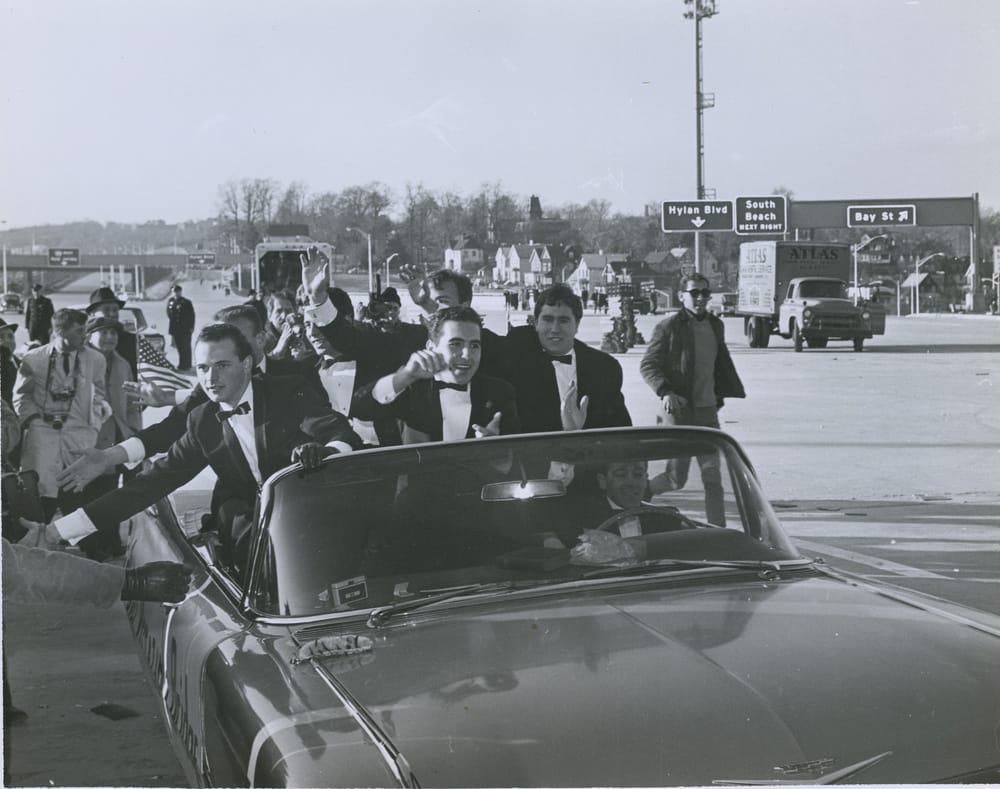
The first driver to cross the bridge made sure to do it in style, similar to other first crossings in New York City. According to the New York Times, he rented a tuxedo for the occasion and drove a “pale blue Cadillac convertible with flags flapping from the fenders.” He ensured his fate as the bridge’s first driver by parking behind the Staten Island Toll for a week before the bridge opened. At the time, it cost 50 cents to cross, or the equivalent of a little less than $4 by today’s currency. Today, it costs $11.19 by mail or $6.94 with an EZ Pass to use the bridge.
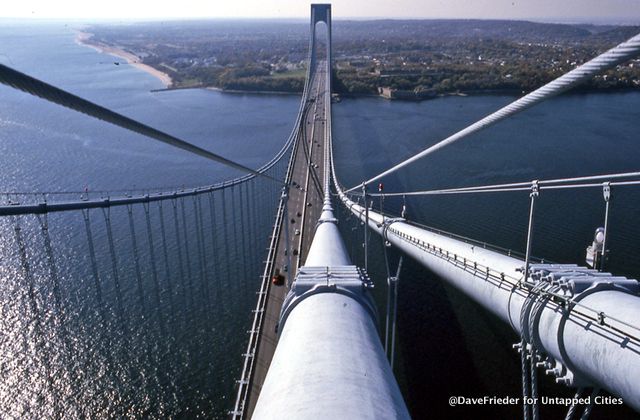
At 4,260 feet, the equivalent of 14 football fields and four-fifths of a mile, the Verrazzano-Narrows Bridge was the world’s largest suspension span when it opened in 1964. It lost its title in 1981 to Humber Bridge in London and is now the eleventh longest in the world. In the United States, however, it still remains the longest. It was also the world’s heaviest bridge at the time it opened, weighing 1,265,000 tons.
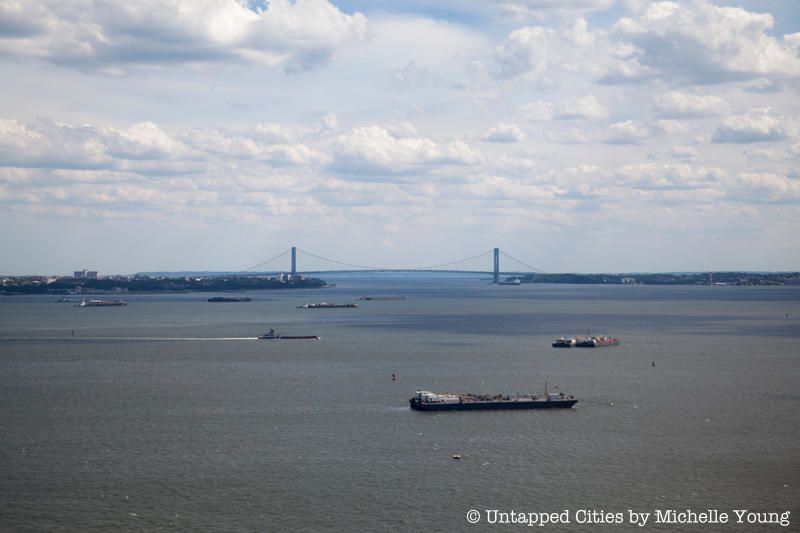
In celebration of the country’s bicentennial anniversary, a 71,000-square-foot flag was hung across the Verrazzano-Narrows Bridge. The flag was 193 feet by 366.5 feet and weighed about 1-1/2 tons. Sponsored by Arm and Hammer, the flag was manufactured by Hood Sailmakers Inc. and the Annin Flag Company. However, the design for the flag had not factored the wind and it was ripped to shreds in just a few hours after being erected. Today, the flag hung on special occasions on the George Washington Bridge is considered the world’s largest free-flying flag.
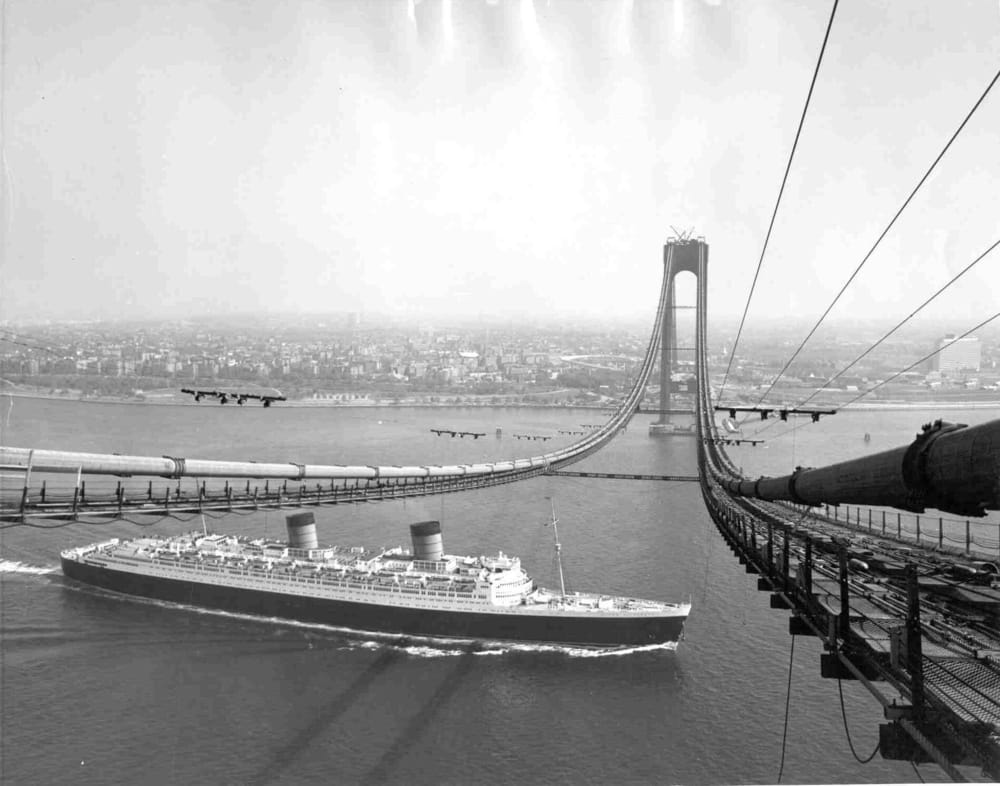
Working with Robert Moses, the Swiss-born architect Othmar Ammann six New York City bridges including the George Washington, Bayonne, Triborough, Bronx-Whitestone, and Throgs Neck. He was given a $320 million budget, equivalent to $2.5 billion in today’s currency. Ammann prided himself on completing the bridge on budget and on schedule. He also designed the Golden Gate Bridge in San Francisco. While Ammann was a renowned engineer, Moses did not even acknowledge him at the opening ceremony.
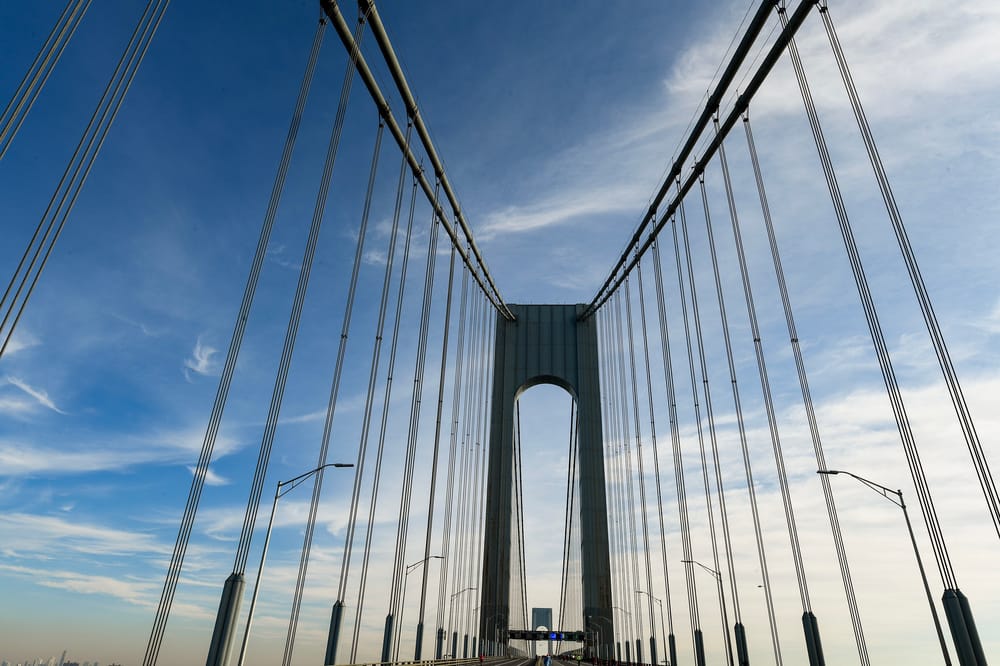
The Brooklyn tower of the Verrazzano Bridge was built by Harris Structural Steel and the Staten Island tower was built by American Bridge, which at the time was a part of U.S. Steel Corporation. While the towers were similar in style, there was a slight difference in the construction process. However, once completed, it was very difficult to tell the distinction between the two. Interestingly, John Roebling and Sons, the famed Brooklyn Bridge engineers, spun and made the suspender rope for the bridge.
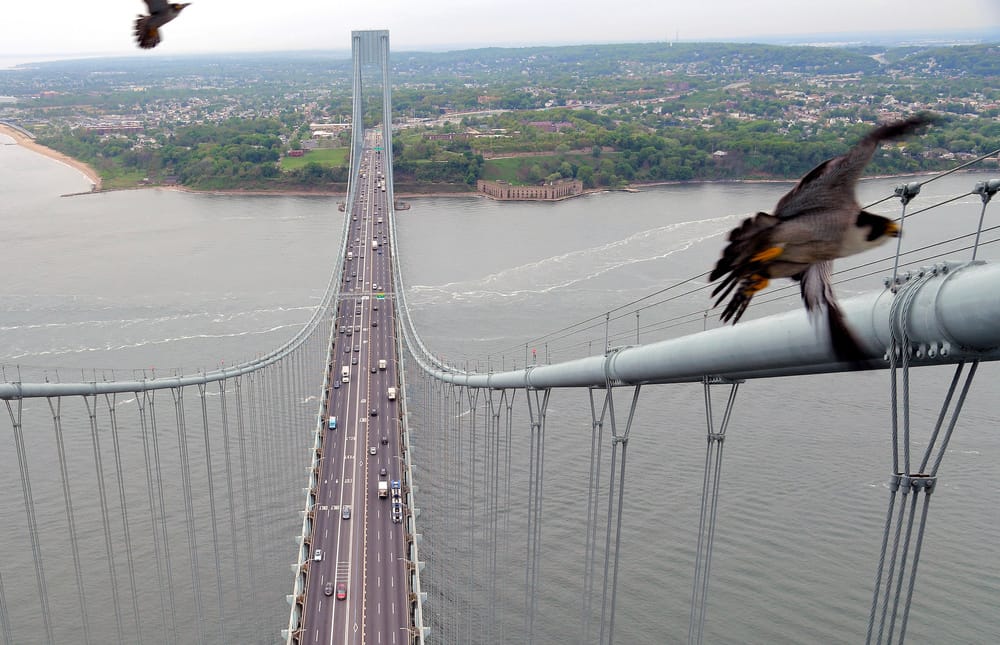
The endangered peregrine falcon has made a home atop the Verrazzano-Narrows Bridge. In the 1960s, these birds almost went completely extinct. Fortunately, the MTA and DEP stepped in and providing nesting homes for the falcons. Now, five falcons live atop the Verrazzano-Narrows Bridge. According to the Bensonhurst Bean, the birds are named after residential references: Belle for Belle Harbor; Jake, for Jacob Riis Park; Bennett, for Floyd Bennett Field; and Gil, for baseball star Gil Hodges.
Our bridge expert, Dave Frieder, says he’s been attacked by these birds on numerous occasions when they dive-bomb him while climbing.
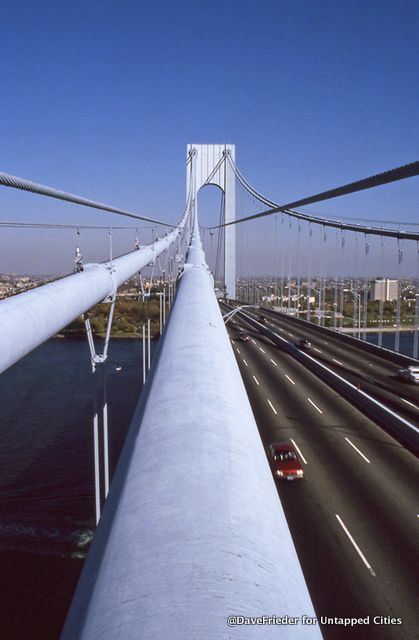
The Verrazzano-Narrows Bridge’s towers vary in a couple of different ways. During construction, they were built to be perfectly perpendicular to the earth. In order to do so they are one and five-eighths further apart at the top than at the base to compensate for the curvature of the earth. They’re also the highest towers of New York City’s bridges – spanning 693 feet from top to bottom. In comparison, the Brooklyn Bridge tower is only 272 feet.
See more from Dave Frieder on his website.
Subscribe to our newsletter